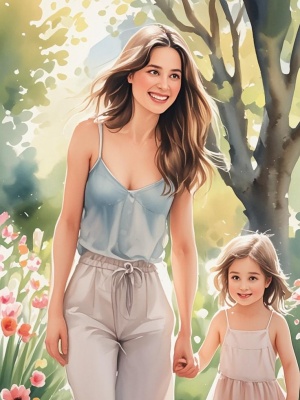The Art of Watercolor Portrait Painting: Techniques and Tips
Introduction to Watercolor Portraits
Watercolor portrait painting is a delicate and expressive art form that captures the essence of human subjects with fluid brushstrokes and translucent colors. Unlike other mediums, watercolor offers unique challenges and rewards, making it a favorite among artists who appreciate spontaneity and subtlety. Whether you're a beginner or an experienced painter, mastering watercolor portraits requires understanding the medium's characteristics, techniques, and common pitfalls.
In this comprehensive guide, we'll explore the fundamentals of watercolor portrait painting, from selecting the right materials to advanced blending techniques. For those interested in digital alternatives, check out our AI Painting Guide for modern approaches to portrait creation.
Essential Materials for Watercolor Portraits
Choosing the Right Supplies
The quality of your watercolor portrait begins with selecting appropriate materials. Here are the key components every artist needs:
- Watercolor Paints: Professional-grade paints with high pigment concentration yield better results than student-grade options.
- Brushes: A variety of round brushes (sizes 2-12) and a flat wash brush are essential for different techniques.
- Paper: 100% cotton, cold-pressed paper (140lb/300gsm) provides the ideal texture and absorbency.
- Additional Tools: Palette, water containers, masking fluid, and quality pencils for sketching.
Fundamental Techniques for Watercolor Portraits
Building Layers and Values
The magic of watercolor portraits lies in the layering process. Unlike opaque mediums, watercolor requires working from light to dark. Start with faint washes to establish basic shapes and gradually build up values. This technique allows for the luminous quality that makes watercolor portraits so captivating.
Capturing Skin Tones
Mixing realistic skin tones is one of the biggest challenges in watercolor portrait painting. A basic palette should include:
- Cadmium Red Light (for warm undertones)
- Yellow Ochre (for base skin color)
- Ultramarine Blue (for shadows and cool areas)
- Burnt Sienna (for deeper tones and contours)
For more portrait techniques, explore our Portrait to Art Detail guide.
Common Challenges and Solutions
Problem-Solution Matrix
| Problem | Solution |
|---|---|
| Colors appearing muddy | Limit your palette to 3-4 colors and clean water between mixes |
| Paper buckling | Stretch paper beforehand or use heavier weight (300gsm+) |
| Difficulty controlling washes | Practice graded washes on scrap paper first |
| Overworked areas | Work quickly and learn when to stop; watercolor rewards spontaneity |

Advanced Watercolor Portrait Techniques
Wet-on-Wet vs. Wet-on-Dry
Mastering these two fundamental approaches will significantly improve your watercolor portraits:
- Wet-on-Wet: Applying pigment to damp paper creates soft, diffused edges perfect for atmospheric effects.
- Wet-on-Dry: Applying pigment to dry paper yields crisp edges and detailed work, ideal for facial features.
Negative Painting
This advanced technique involves painting around the subject to define it, rather than painting the subject directly. It's particularly effective for creating depth in hair and background elements.
Digital Alternatives: AI Watercolor Portraits
For those interested in modern approaches, AI technology now offers tools to create watercolor-style portraits from photographs. Our Image to Image feature can transform your photos into beautiful watercolor artworks with customizable styles.
Conclusion: The Timeless Appeal of Watercolor Portraits
Watercolor portrait painting remains one of the most rewarding artistic endeavors, combining technical skill with emotional expression. While challenging, the medium's unique characteristics - its transparency, fluidity, and unpredictability - create portraits with unmatched vitality and freshness.

Whether you choose traditional methods or explore digital alternatives like our AI Photo Enhancer, the key to success lies in practice, patience, and a willingness to embrace the medium's inherent qualities. Remember that even "mistakes" in watercolor can lead to beautiful, unexpected results that contribute to your artistic voice.
For further inspiration, visit our Gallery to see examples of watercolor portraits and other artistic styles. Happy painting!